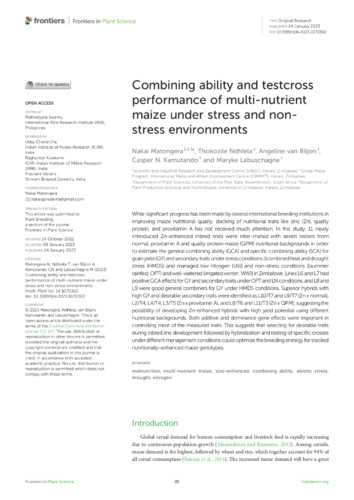Combining ability and testcross performance of multi-nutrient maize under stress and non-stress environments
Abstract
While significant progress has been made by several international breeding institutions in improving maize nutritional quality, stacking of nutritional traits like zinc (Zn), quality protein, and provitamin A has not received much attention. In this study, 11 newly introduced Zn-enhanced inbred lines were inter-mated with seven testers from normal, provitamin A and quality protein maize (QPM) nutritional backgrounds in order to estimate the general combining ability (GCA) and specific combining ability (SCA) for grain yield (GY) and secondary traits under stress conditions [(combined heat and drought stress (HMDS) and managed low nitrogen (LN)] and non-stress conditions [(summer rainfed; OPT) and well-watered (irrigated winter; WW)] in Zimbabwe. Lines L6 and L7 had positive GCA effects for GY and secondary traits under OPT and LN conditions, and L8 and L9 were good general combiners for GY under HMDS conditions. Superior hybrids with high GY and desirable secondary traits were identified as L10/T7 and L9/T7 (Zn x normal), L2/T4, L4/T4, L3/T5 (Zn x provitamin A), and L8/T6 and L11/T3 (Zn x QPM), suggesting the possibility of developing Zn-enhanced hybrids with high yield potential using different nutritional backgrounds. Both additive and dominance gene effects were important in controlling most of the measured traits. This suggests that selecting for desirable traits during inbred line development followed by hybridization and testing of specific crosses under different management conditions could optimize the breeding strategy for stacked nutritionally-enhanced maize genotypes.

